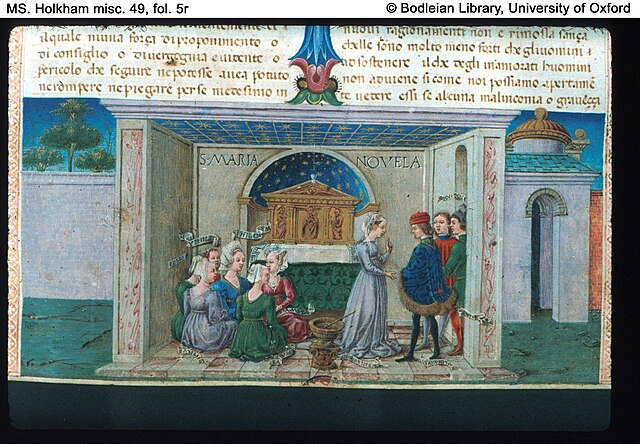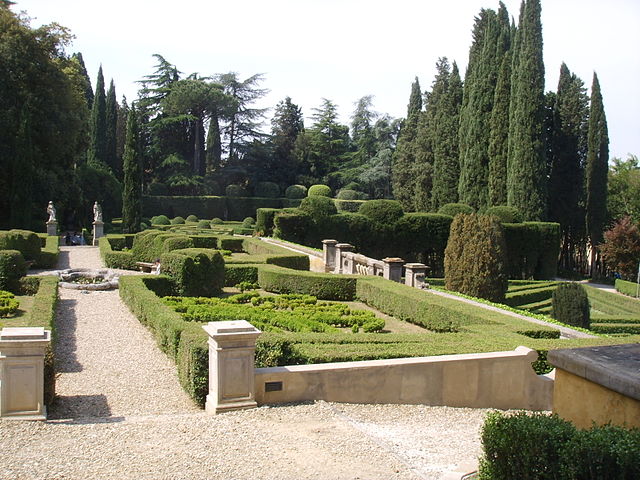Summary of Decameron tales
This article contains summaries and commentaries of the 100 stories within Giovanni Boccaccio's The Decameron.
A tale from The Decameron, by John William Waterhouse
The basilica of Santa Maria Novella, with a Renaissance façade that was completed about 100 years after The Decameron was written
Equestrian statue of Can Grande della Scala
The Ponte Vecchio, which was brand new in Boccaccio's time, in Florence. The city is the setting of many stories of the Decameron.
The Decameron, subtitled Prince Galehaut and sometimes nicknamed l'Umana commedia, is a collection of short stories by the 14th-century Italian author Giovanni Boccaccio (1313–1375). The book is structured as a frame story containing 100 tales told by a group of seven young women and three young men; they shelter in a secluded villa just outside Florence in order to escape the Black Death, which was afflicting the city. Boccaccio probably conceived of the Decameron after the epidemic of 1348, and completed it by 1353. The various tales of love in The Decameron range from the erotic to the tragic. Tales of wit, practical jokes, and life lessons contribute to the mosaic. In addition to its literary value and widespread influence, it provides a document of life at the time. Written in the vernacular of the Florentine language, it is considered a masterpiece of early Italian prose.
Illustration from a ca. 1492 edition of Il Decameron published in Venice
Miniature by Taddeo Crivelli in a manuscript of c. 1467 from Ferrara (Bodleian Library, Oxford)
The garden of the Villa Schifanoia in Fiesole (Florence)
A Tale from the Decameron (1916) by John William Waterhouse.







